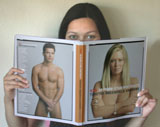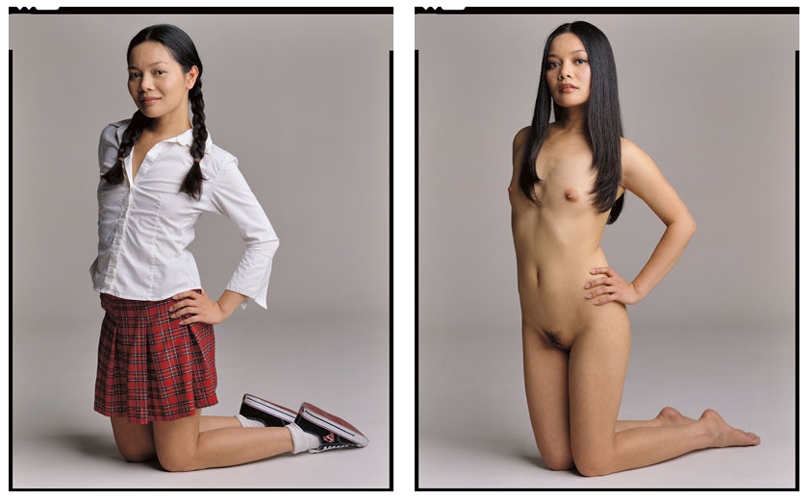Portraitists depict people in the context of their time. In hallowed halls of museums around the world, portrait paintings of political figures hang stoically, the subjects dressed in the garb of their day, puffed up with self-importance. In contrast, nude paintings have a timeless ethereal quality, depicting the beauty of the human form, modeled after unknown men and women, portraying gods, goddesses, and mythical beings.

Photography made portraiture more accessible. Portraits abound in everyday consciousness: on glossy magazine covers, billboards, the sides of buses… and it is not limited to the elites anymore. Every family passes down generations of portraits. Nudes, on the other hand, remain the property of the unknown – hidden in closets at home, or strictly regulated when on public display.
Timothy Greenfield-Sanders is faithful to the art of portraiture, even when photographing nudes. His portraits of porn stars at the beginning of the 21st century is timely. No other time has there been such public awe, if not respect, for porn stars. Porn, it seems, has finally seen the light of day.
The photos reveal each subject as a “real” person, the performance artist behind the characters portrayed in pornography. The photos are laid out side by side. On the left page, the subject is clothed, not in “fuck me” outfits, but in daytime street clothes. On the right page, the subject is nude, not in a raunchy posture typical of porn, but in open and honest gestures. More nude than nude, without the benefit of hiding behind a larger-than-life sexy persona.
The diptychs remind me of the duality of each subject. Being a “porn star” is the closest I’ve come to being a superhero. Not only in the transformation that takes place before each performance, but also the creation of an alter ego which I keep discreet, if not secret, from the people I interact with daily. Neither side is more or less me, both sides as entwined as each human being’s body and soul.

Although the subject of the book is capital P-O-R-N, it is not pornographic. That is, its intention is not to arouse the viewer/reader. Essays by literary and artistic greats offer varying points of view. Gore Vidal speculates on pre-historic roots of erotica. Salman Rushdie pontificates on the necessity of porn as an expression of freedom in sexually repressed societies. John Waters and Chichi LaRue banter about creating orgies on film. The porn stars justify their work as empowering. Lou Reed seems to have copy-pasted porn spam from his email box and transformed it into a babelogue of provocative rant.
Perhaps the importance of XXX: 30 Porn-Star Portraits can be summed up in the essay written by actor, John Malkovich, who prophesies a future when all porn is amateur. He goes on to say that “the people represented in this book are possibly the last professionals (and in some cases, among the first pioneers) of a rapidly changing industry.” XXX: 30 Porn-Star Portraits documents this shift in society’s perspective on sex and porn.
Performing in porn is not anymore relegated to the poor and uneducated. In fact, being a porn star on the internet requires that one at least be able to afford a computer, internet access, a digital camera and a video camera. It also helps to be literate and computer savvy. Porn stars can be college educated, hotel chain heiresses, and soccer moms. Yes, porn stars can be you and me.
